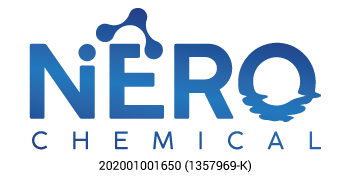Corrosion is the deterioration of a metal due to either chemical or electrochemical reactions with its surrounding environment. In cooling systems, corrosion leads to two primary issues. Firstly, it results in equipment failure, necessitating replacement and causing plant downtime, thereby incurring costs. Secondly, it decreases plant efficiency by hindering heat transfer, primarily caused by the accumulation of corrosion products that lead to fouling in heat exchangers.
The process of corrosion primarily occurs at the anode, where the metal dissolves. Often, there is a physical separation from the cathode, where a reduction reaction occurs. A distinct electrical potential difference exists between these locations, leading to the flow of current through the solution from the anode to the cathode. This movement of current is accompanied by the flow of electrons from the anode to the cathode through the metal, contributing to the corrosion process.
What is corrosion control in water treatment?
Controlling corrosion typically involves altering either the metal used or modifying the environment in which the metal operates.
The first method, changing the metal, can be expensive. Additionally, highly alloyed materials, while more resistant to general corrosion, are often more susceptible to failure due to localized corrosion mechanisms like stress corrosion cracking.
The second method, altering the environment, is a widely employed and practical approach to prevent corrosion. There are three main strategies to modify the environment and inhibit corrosion:
- Formation of a Protective Film: Utilizing the natural calcium and alkalinity present in the water to create a protective film of calcium carbonate on the metal surface.
- Oxygen Removal: Eliminating corrosive oxygen from the water can be achieved through mechanical or chemical deaeration methods or by adding corrosion inhibitors.
These methods aim to create an environment that is less conducive to corrosion, offering practical and effective ways to prevent or minimize metal degradation within industrial systems.
Nero Corrosion Treatment Features & Benefits
A proactive approach to corrosion control offers several features and benefits:
- Improved Productivity and Equipment Reliability: Enhances productivity and equipment reliability by maximizing heat transfer efficiency, improving process throughput, and reducing downtime for routine cleanings.
- Extended Equipment Longevity: Allows for longer runs and extended turnaround times, contributing to equipment longevity.
- Enhanced Safety Measures: Provides a more forgiving chemistry that helps protect assets, minimizing problems associated with unscheduled shutdowns.
- Reduced Total Cost of Ownership: Reduces the overall cost of ownership by facilitating the use of alternative water sources, keeping equipment cleaner, thus leading to lower maintenance expenses and fewer cleaning procedures.
- Cost-Effective Performance: Delivers superior protection in comparison to other available chemistries in the market, offering competitive costs while maintaining performance standards.
- This proactive approach not only ensures efficient operations but also minimizes costs and enhances safety, making it a comprehensive and effective strategy for corrosion control in industrial systems.
Corrosion Control Program









